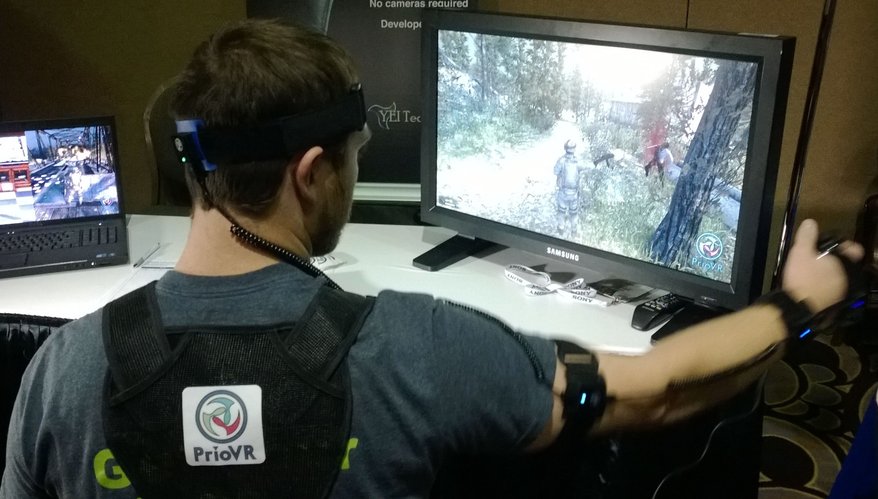The first consumer-ready PrioVR mo-cap suits unveiled at CES 2014

The Oculus Rift does a neat job of putting your head inside a game, but what about the rest of your body? YEI Technology's first stab at Kickstarting their PrioVR mo-cap suit fell short, gathering 49% of its $225K goal, but with the first consumer-ready prototypes being shown off at a packed CES preview event YEI are gearing up to start a new funding drive on Valentine's Day.
The prototype suit I saw at the show is a half-body affair, with sensors in the hands and head, tracking upper body movements with a pretty impressive degree of accuracy. I got all excited on first glance because I thought they were demoing with DayZ, but it turned out to be an in-house game YEI had developed themselves to show the suit off.
The suit has around eight to ten hours of wireless gaming time, and each attached sensor houses a three-axis accelerometer, magnetometer and gyroscope.
It was a little odd seeing the demo-man gyrating on a spinning stool in front of the PC monitor, but even more so seeing him rolling around on the floor in the company videos. The system is designed to support multiple suits on the same PC, but you may not want others seeing you during a vigorous session.
Right now their in-house titles are the only ones they can show off, but they have developed an SDK and are looking to make it as easy as possible to translate the motion-tracking sensor data into existing games. I spoke to Ashley Hetman of YEI Technology about it and she said they are in talks with a number of developers at the moment, but couldn't divulge which ones. At the moment though they are looking at drop-in support for Unity3D, the Unreal Development Kit (UDK) and CryEngine.
The biggest gaming news, reviews and hardware deals
Keep up to date with the most important stories and the best deals, as picked by the PC Gamer team.

Dave has been gaming since the days of Zaxxon and Lady Bug on the Colecovision, and code books for the Commodore Vic 20 (Death Race 2000!). He built his first gaming PC at the tender age of 16, and finally finished bug-fixing the Cyrix-based system around a year later. When he dropped it out of the window. He first started writing for Official PlayStation Magazine and Xbox World many decades ago, then moved onto PC Format full-time, then PC Gamer, TechRadar, and T3 among others. Now he's back, writing about the nightmarish graphics card market, CPUs with more cores than sense, gaming laptops hotter than the sun, and SSDs more capacious than a Cybertruck.

